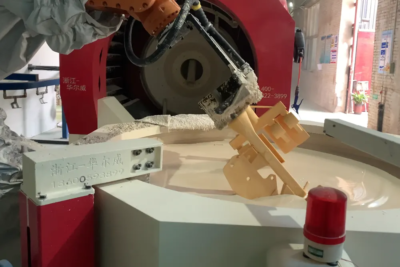Leveraging AI in Forex Trading: A Roadmap to Success

Forex trading, also known as foreign exchange trading, is a dynamic and highly volatile market that requires astute decision-making and timely executions. With advancements in technology, the use of artificial intelligence (AI) has become an integral part of many industries, and forex trading is no exception. This article aims to delve into the intricacies of leveraging AI in forex trading and provide a roadmap to success for traders.
Understanding Forex Trading
Before we delve into the role of AI in forex trading, let’s first understand the basics of this flourishing market. Forex trading involves the buying and selling of currencies with the aim of making profitable trades. Traders participate in this market through various platforms and execute trades based on their analysis of currency pairs, market trends, and economic indicators.
Forex trading operates on the principle of currency exchange rates. Traders analyze the value of different currencies in comparison to others and take advantage of fluctuations in these rates to make profitable trades.
In forex trading, currency pairs are traded, and each pair consists of a base currency and a quote currency. For example, in the EUR/USD pair, the euro is the base currency, and the US dollar is the quote currency. Traders analyze these pairs and make predictions about their future movements.
Traders use various technical and fundamental analysis tools to assess the market and identify potential trading opportunities. Technical analysis involves studying charts, patterns, and indicators to predict future price movements. Fundamental analysis, on the other hand, focuses on economic factors, such as interest rates, GDP growth, and geopolitical events, to determine the value of a currency.
Key Terminologies in Forex Trading
Before diving deeper into the use of AI in forex trading, it is essential to familiarize ourselves with key terminologies that are commonly used in this market. Understanding these terms will enable traders to grasp the concepts and strategies discussed.
Some fundamental terminologies include:
- Pip (Percentage in Point): A pip is the smallest unit of measurement in forex trading. It represents the change in value between two currencies and is usually calculated to the fourth decimal place.
- Leverage: Leverage allows traders to control larger positions in the market with a smaller amount of capital. It amplifies both profits and losses, so it is crucial to use leverage wisely.
- Margin: Margin refers to the amount of money required to open and maintain a trading position. It acts as a collateral for potential losses.
- Stop-Loss: A stop-loss order is an instruction given to a broker to automatically close a trade when it reaches a specific price level. It helps limit potential losses.
- Take-Profit: A take-profit order is an instruction given to a broker to automatically close a trade when it reaches a specific price level. It allows traders to lock in profits.
By understanding these key terminologies, traders can effectively communicate and implement their trading strategies. It is important to continuously educate oneself about the forex market and stay updated with the latest trends and developments.
The Role of AI in Forex Trading
AI has revolutionized various industries, and the forex trading landscape is no exception. The implementation of AI technologies has significantly enhanced traders’ abilities to analyze market trends, make accurate predictions, and execute trades in real time.

Introduction to AI in Forex Trading
AI algorithms are designed to analyze vast amounts of data and identify patterns that might be imperceptible to human traders. By harnessing the power of machine learning and deep neural networks, AI systems can process data at an unprecedented speed, enabling traders to make informed decisions.
When it comes to forex trading, AI plays a crucial role in automating various tasks that were traditionally done manually. For example, AI algorithms can analyze market data, news articles, and social media sentiment to identify potential trading opportunities. This automation not only saves time but also reduces the risk of human error.
In addition to automation, AI systems can also provide valuable insights and recommendations to traders. By analyzing historical data and market trends, AI algorithms can generate predictions about future price movements, helping traders make more accurate and profitable decisions.
How AI is Changing the Forex Trading Landscape
The use of AI in forex trading has brought about several notable changes. Firstly, AI algorithms can process and analyze large sets of historical and real-time data, enabling traders to identify trends and patterns that would be otherwise challenging to detect manually.
Moreover, AI systems can make real-time decisions by utilizing complex mathematical models and algorithms. This enables traders to react swiftly to market movements, maximizing their chances of making profitable trades.
Another way AI is changing the forex trading landscape is through the development of autonomous trading systems. These systems, also known as trading bots, can execute trades automatically based on predefined rules and algorithms. By removing human emotions from the trading equation, autonomous trading systems aim to eliminate biases and make more objective trading decisions.
Furthermore, AI-powered risk management tools have become an integral part of forex trading. These tools can analyze market volatility, assess the risk associated with specific trades, and provide risk management recommendations to traders. By utilizing AI, traders can better manage their risk exposure and protect their capital.
It’s important to note that while AI has brought numerous benefits to forex trading, it is not without its challenges. Developing and maintaining AI systems requires a significant investment in terms of time, resources, and expertise. Additionally, there is always a risk of AI systems making incorrect predictions or decisions, which can lead to financial losses.
As the realm of Forex trading embraces technological advancements, https://immediateconnectapp.org/ is emerging as a potentially game-changing innovation. By harnessing the capabilities of quantum computing, combined with advanced artificial intelligence algorithms, traders can process vast amounts of market data at unprecedented speeds.
This powerful combination enables more accurate forecasting of currency fluctuations and can provide traders with enhanced decision-making insights. As we journey through the roadmap to Forex trading success, it’s essential to stay updated with these groundbreaking Immediate Connect tools and consider their integration for a competitive edge.
In conclusion, AI has transformed the forex trading landscape by providing traders with advanced tools and capabilities. From data analysis and prediction generation to automated trading and risk management, AI has become an invaluable asset for traders looking to stay ahead in the dynamic and fast-paced world of forex trading.
Benefits of Using AI in Forex Trading
The integration of AI in forex trading offers several advantages that can significantly impact a trader’s success rate.
Increased Accuracy in Predictions
One of the primary benefits of leveraging AI in forex trading is the increased accuracy in predicting market movements. AI algorithms can analyze vast amounts of data and identify patterns that may indicate potential future trends. This allows traders to make more informed decisions and increase their chances of profitable trades.
Real-time Decision Making
AI systems excel in making real-time decisions based on market trends and indicators. By leveraging AI, traders can automate various aspects of their trading strategies, enabling them to capitalize on timely opportunities and execute trades swiftly.
Risk Management and Mitigation
Risk management is a crucial aspect of forex trading. AI systems can analyze market conditions and adjust trading strategies accordingly to mitigate risks. By implementing AI-powered risk management tools, traders can enhance their risk-reward ratios and improve overall profitability.
Implementing AI in Forex Trading
Implementing AI in forex trading requires careful considerations and a well-defined approach. Traders need to select the right AI tools that align with their trading goals.
Choosing the Right AI Tools for Forex Trading
With a range of AI tools available in the market, selecting the most suitable ones can be challenging. Traders should evaluate tools based on their functionalities, accuracy, and compatibility with their existing trading infrastructure.
Training AI for Forex Trading
Training AI systems for forex trading involves feeding them historical data and allowing them to learn from it. Traders should ensure that the training data is diverse, representative, and relevant to the market conditions they wish to trade in.
Monitoring and Adjusting AI Systems in Forex Trading
Once implemented, AI systems need to be monitored and adjusted periodically. Market conditions change, and traders should review the performance of their AI systems to ensure optimal results.
Case Studies of Successful AI Implementation in Forex Trading
The success stories of AI implementation in forex trading highlight the potential benefits it brings.
AI in Forex Trading: A Success Story
In recent years, the integration of AI-driven algorithms into Forex trading platforms has revolutionized the industry. One standout success story highlights how leveraging AI for market data analysis led to significant improvements in trading outcomes. By deciphering intricate market patterns and providing real-time predictive insights, the AI system enabled more consistent profits. Over time, the continuous learning capability of this AI model refined trading strategies, adapting to market changes faster than traditional methods ever could. This successful integration underscores the potential of AI to be a game-changer in the Forex trading world.
Lessons Learned from AI Implementation in Forex Trading
Implementing AI in forex trading is a journey that requires continuous learning. Traders should be open to new developments, adapt their strategies based on the AI system’s performance, and stay informed about the latest advancements in AI technologies.
As the forex trading landscape evolves, the integration of AI technologies becomes increasingly important. Leveraging AI can provide traders with the necessary tools to make accurate predictions, execute trades in real time, and effectively manage risks. By understanding the basics of forex trading, exploring the role of AI, and implementing AI systems strategically, traders can embark on a roadmap to success in the dynamic world of forex trading.
Alexia is the author at Research Snipers covering all technology news including Google, Apple, Android, Xiaomi, Huawei, Samsung News, and More.











